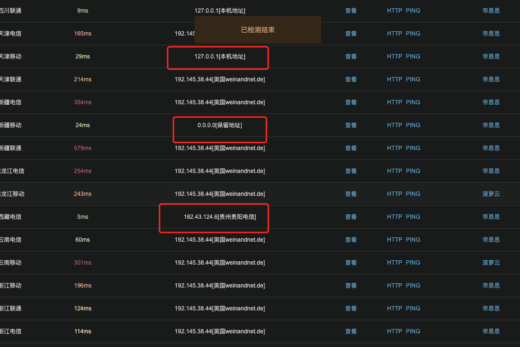Goals
1. v7.0 -> v8.2 (auto security enable)
- disable default ssl proxy pass by nginx
- enable default ssl use default ca created by ‘ElasticSearch auto ‘ crs
- enable default ssl generate diffrent ca ( elastchsearch <https> kibana <https> fleetserver ))
2. filebeats -> fleet-server (server<->agent->elasticsearch)
Dashboard
https://kibana.intbird.net/

https://kibana.intbird.net/app/integrations/detail/nginx-1.3.1/assets
https://kibana.intbird.net/app/integrations/detail/system-1.11.0/assets
auto default certificates
1: certs/http_ca.crt
Elastic Auto CA
2: certs/http.p12
current Node Api Used(kibana & other api clients)
elasticsearch-keystore show xpack.security.http.ssl.keystore.secure_password
3: certs/transport.p12
elasticsearch-keystore show xpack.security.transport.ssl.keystore.secure_password
elasticsearch-keystore show xpack.security.transport.ssl.truststore.secure_password
custom-certificate

nginx-log:
https://docs.nginx.com/nginx/admin-guide/monitoring/logging/
add https domain name ($servername) to nginx log
log_format compression '$remote_addr - $remote_user [$time_local]'
'"$host" "$request" $status $body_bytes_sent '
'"$http_referer" "$http_user_agent" "$gzip_ratio"';system-log
prevent policies: iptables + sshd

elasticsearch add custom nginx log field
- Stack Management
- Ingest Pipelines
- Edit pipeline
- Manage processor
- Grok
- Test if match the new nginx access.log
- Update the agent-pliocy & nginx-integration
在nginx原始信息的Grok解析中添加后续添加的字段,或者append到数据流发送到 fleetserver
log_format compression '$remote_addr - $remote_user [$time_local] '
'"$request" $status $body_bytes_sent '
'"$http_referer" "$http_user_agent" '
'"$server_name"';
docs:
$ip - - [04/Feb/2023:04:46:57 -0500] "GET /api/v1/xxx HTTP/1.1" 200 9726 "https://$host/$path" "Mozilla/5.0xxx" "$domain"
grok:
"%{DATA:https.domain}"

save to nginx-log-temp

Before

after

iptables: https://wiki.archlinux.org/title/iptables
iptables -A INPUT -p tcp -s 45.0.0.0/8 -j DROP
iptables -D INPUT -p tcp -s 45.0.0.0/8 -j DROPiptables-docker: https://docs.docker.com/network/iptables/
iptables -I DOCKER-USER -s 45.0.0.0/8 -j DROP
iptables -D DOCKER-USER -s 45.0.0.0/8 -j DROPfail2ban: https://www.fail2ban.org/wiki/index.php/Main_Page
array=(
*.*.*.*
x.x.x.x
)
for element in ${array[@]}
do
#echo $element
iptables -I INPUT -s $element -j DROP
done
#iptables -D INPUT -s $element -j DROP
iptables -L -n --line-numbers
for index in num in {x..x}
do
iptables -D INPUT $index
done
sshd_config: https://linux.die.net/man/8/sshd
Port x
PermitRootLogin prohibit-password
PasswordAuthentication no
PubkeyAuthentication yes
AllowUsers root@x.x.x.xdefault user

default user: elastic
user passwd: ./bin/elasticsearch-reset-password -u elastic -i ( user interactive password)
and more: ls /bin/
default https
https://www.elastic.co/guide/en/kibana/current/docker.html
https://www.elastic.co/guide/en/fleet/master/secure-connections.html
不使用域名的话:自动配置127.0.0.1 和 172.*.0.* ip的自签名证书
version: '2'
services:
kibana:
image: docker.elastic.co/kibana/kibana:8.2.0
#environment:
# SERVER_NAME: kibana.example.org
volumes:
- ./kibana.yml:/usr/share/kibana/config/kibana.ymladd fleet-agent vs filebeats
https://www.elastic.co/guide/en/fleet/master/secure-connections.html
fleet-agent-server
https://kibana.intbird.net/app/fleet/agents
·我也不太想用443的正式域名,所以自签名一个fleeturl+port的域名·
Quick start : fleet-server-http
sudo ./elastic-agent install \
--fleet-server-es=https://publicipOrdomain:9200 \
--fleet-server-service-token=xxxxxx \
--fleet-server-es-ca-trusted-fingerprint=xxxxx
#test: --fleet-server-insecure-httpProduction : fleet-server-https
./elastic-agent install --url=https://publicipOrdomain:8220 \
--fleet-server-es=https://x.x.x.x:9200 \
--fleet-server-service-token=xxx \
--fleet-server-policy=fleet-server-policy \
--fleet-server-es-ca-trusted-fingerprint=xxx \
--certificate-authorities=/opt/Elastic/ssl/fleet/chain.crt \
--fleet-server-cert=/opt/Elastic/ssl/fleet/publicipOrdomain_chain.crt \
--fleet-server-cert-key=/opt/Elastic/ssl/fleet/publicipOrdomain_key.keyProduction: fleet-agent-https:
./elastic-agent install --url=https://publicipOrdomain:8220/ \
--enrollment-token=xxxxx \
--certificate-authorities= /opt/Elastic/ssl/fleet/chain.crt
install success but wait for a long time…
Successfully enrolled the Elastic Agent.
Elastic Agent has been successfully installed.
install package
/usr/bin/elastic-agent uninstall
rm -rf /opt/Elastic/Agent/
curl -L -O https://artifacts.elastic.co/downloads/beats/elastic-agent/elastic-agent-8.2.0-linux-x86_64.tar.gz
tar xzvf elastic-agent-8.2.0-linux-x86_64.tar.gz
cd elastic-agent-8.2.0-linux-x86_64
/opt/Elastic/Agent
/opt/Elastic/install
/opt/Elastic/sslagent-panel: https://kibana.intbird.net/app/fleet/policies

add intergration
intergration system:

intergration nginx:
fleet-server:
https://kibana.intbird.net/app/integrations/detail/nginx-1.3.1/overview
filebeats:
https://www.elastic.co/guide/en/beats/filebeat/current/index.html
https://www.elastic.co/guide/en/beats/filebeat/current/running-on-docker.html
https://www.elastic.co/blog/how-to-monitor-nginx-web-servers-with-the-elastic-stack
https://www.nginx.com/blog/monitoring-nginx-plus-statistics-elk/
interation caddy(watting for test…):
log:
output net 127.0.0.1:8220 { dial_timeout <duration> }Certs Location
https://www.elastic.co/guide/en/elasticsearch/reference/current/docker.html
elasticsearch: es:/usr/share/elasticsearch/config/certs
https://www.elastic.co/guide/en/fleet/master/secure-connections.html
fleet-server: /opt/Elastic/Agent/fleet.yml
iptables
-t<表>:指定要操纵的表;
-A:向规则链中添加条目;
-D:从规则链中删除条目;
-i:向规则链中插入条目;
-R:替换规则链中的条目;
-L:显示规则链中已有的条目;
-F:清楚规则链中已有的条目;
-Z:清空规则链中的数据包计算器和字节计数器;
-N:创建新的用户自定义规则链;
-P:定义规则链中的默认目标;
-h:显示帮助信息;
-p:指定要匹配的数据包协议类型;
-s:指定要匹配的数据包源ip地址;
-j<目标>:指定要跳转的目标;
-i<网络接口>:指定数据包进入本机的网络接口;
-o<网络接口>:指定数据包要离开本机所使用的网络接口。
1.表名包括:
raw:高级功能,如:网址过滤。
mangle:数据包修改(QOS),用于实现服务质量。
net:地址转换,用于网关路由器。
filter:包过滤,用于防火墙规则。
2.规则链名包括:
INPUT链:处理输入数据包。
OUTPUT链:处理输出数据包。
PORWARD链:处理转发数据包。
PREROUTING链:用于目标地址转换(DNAT)。
POSTOUTING链:用于源地址转换(SNAT)。
3.动作包括:
accept:接收数据包。
DROP:丢弃数据包。
REDIRECT:重定向、映射、透明代理。
SNAT:源地址转换。
DNAT:目标地址转换。
MASQUERADE:IP伪装(NAT),用于ADSL。
LOG:日志记录。
iptables -A INPUT -s 127.0.0.1 -d 127.0.0.1 -j ACCEPT
iptables -A INPUT -m state -–state ESTABLISHED,RELATED -j ACCEPT
iptables -A OUTPUT -j ACCEPT
iptables -A INPUT -p tcp -–dport 22 -j ACCEPT
iptables -A INPUT -p tcp -–dport 80 -j ACCEPT
iptables -A INPUT -p tcp -–dport 443 -j ACCEPT
iptables -A INPUT -j reject
iptables -A FORWARD -j REJECT


